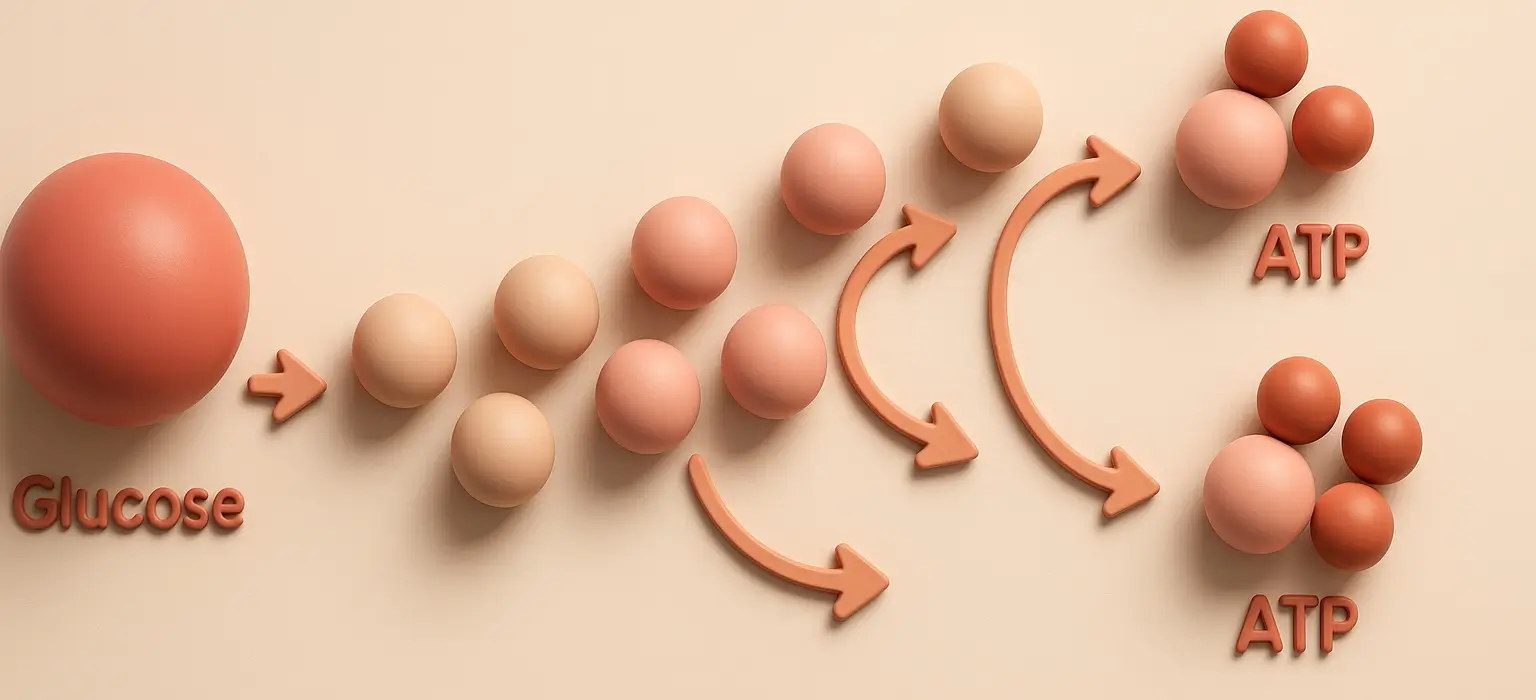- Glycolysis is a pivotal biochemical pathway in the metabolism of glucose, leading to the production of pyruvate, ATP (adenosine triphosphate), and NADH (nicotinamide adenine dinucleotide).
- It occurs in the cytoplasm of cells and operates under anaerobic conditions, meaning it does not require oxygen.
- This process plays a critical role in generating energy and precursor molecules necessary for various cellular functions.
- The pathway of glycolysis is systematically organized into two main phases: the energy investment phase (preparatory phase) and the energy generation phase (payoff phase), each comprising specific enzymatic reactions.
Energy Investment Phase (Preparatory Phase)
- The energy investment phase of glycolysis involves the initial consumption of ATP to prepare glucose for further breakdown.
- The steps are as follows:
-
Phosphorylation of Glucose
- The enzyme hexokinase phosphorylates glucose, forming glucose-6-phosphate (G6P), using 1 ATP, which is converted to ADP.
-
Isomerization of Glycolysis
- Phosphoglucose isomerase converts glucose-6-phosphate into fructose-6-phosphate (F6P).
-
Second Phosphorylation
- Phosphofructokinase-1 (PFK-1) phosphorylates fructose-6-phosphate to form fructose-1,6-bisphosphate (F1,6BP), consuming another 1 ATP.
-
Cleavage of Glycolysis
- Aldolase cleaves fructose-1,6-bisphosphate into two 3-carbon molecules: glyceraldehyde-3-phosphate (G3P) and dihydroxyacetone phosphate (DHAP).
-
Isomerization of DHAP
- Triose phosphate isomerase converts dihydroxyacetone phosphate (DHAP) into another glyceraldehyde-3-phosphate (G3P).
- Now, two G3P molecules enter the energy generation phase.
Energy Generation Phase (Payoff Phase)
- This phase produces ATP and NADH by processing the two glyceraldehyde-3-phosphate molecules formed in the investment phase.
- The steps are as follows:
-
Oxidation and Phosphorylation
- Each G3P is oxidized and phosphorylated by glyceraldehyde-3-phosphate dehydrogenase (GAPDH) to form 1,3-bisphosphoglycerate (1,3BPG), generating 1 NADH per G3P (2 NADH in total).
-
ATP Formation of Glycolysis
- 1,3-bisphosphoglycerate donates a phosphate to ADP, forming ATP and 3-phosphoglycerate (3PG) via phosphoglycerate kinase. This step produces 2 ATP molecules (one per G3P).
-
Conversion to 2-Phosphoglycerate
- Phosphoglycerate mutase converts 3-phosphoglycerate to 2-phosphoglycerate (2PG).
-
Dehydration of Glycolysis
- Enolase dehydrates 2-phosphoglycerate to form phosphoenolpyruvate (PEP).
-
ATP and Pyruvate Formation
- Pyruvate kinase transfers a phosphate from PEP to ADP, forming ATP and pyruvate. This produces 2 ATP molecules (one per G3P).
Energetics of Glycolysis
- Net ATP Gain: 2 ATP (4 ATP produced, 2 consumed).
- NADH Production: 2 NADH, which can further contribute to ATP production via oxidative phosphorylation.
Significance of Glycolysis
- Glycolysis is significant for several reasons:
- Provides a rapid ATP source, especially under anaerobic conditions.
- Produces pyruvate for further aerobic or anaerobic metabolism.
- Central to cellular energy metabolism and the synthesis of precursor molecules.
- This concise overview highlights the importance of glycolysis in energy production and metabolic

